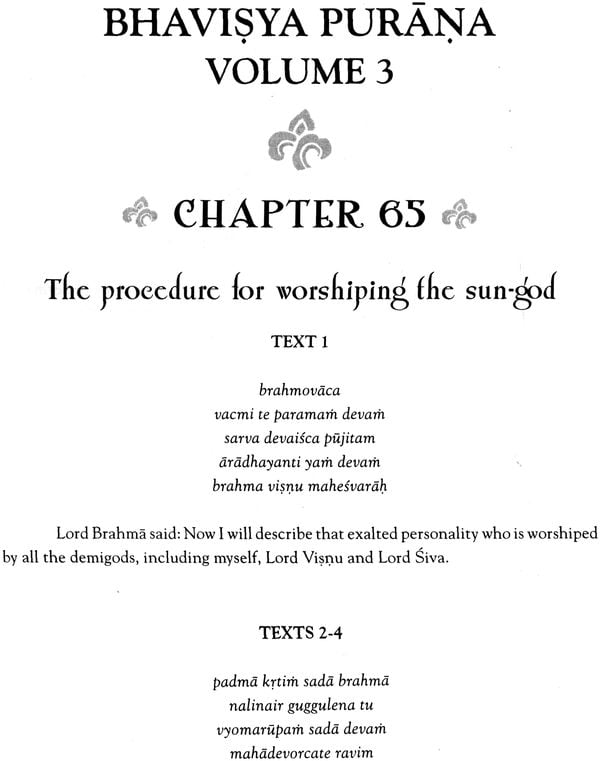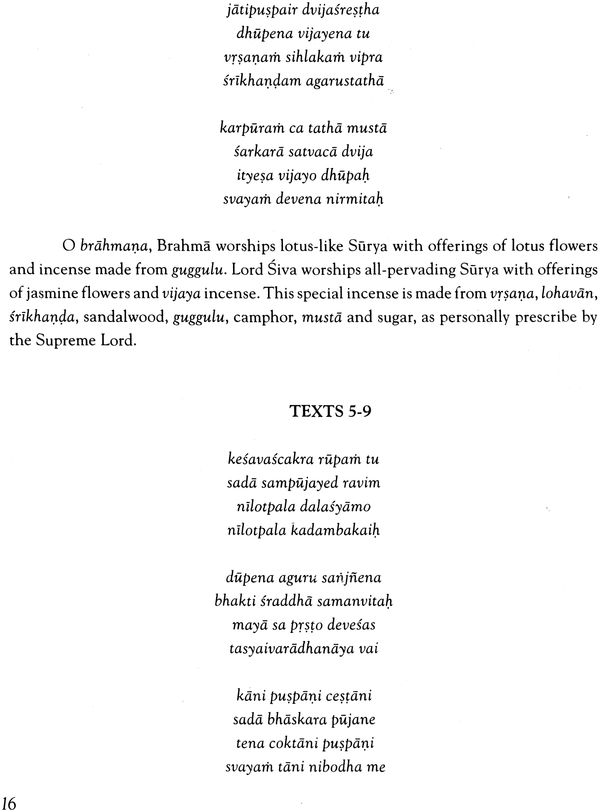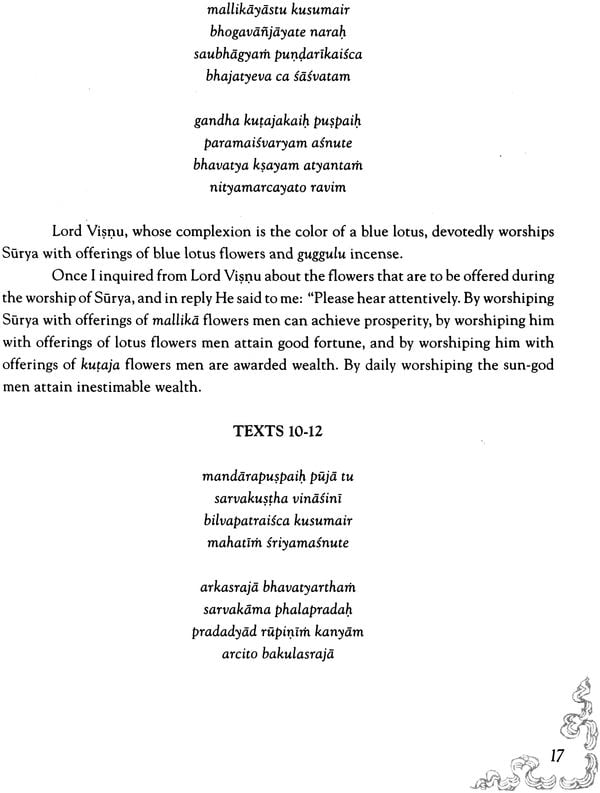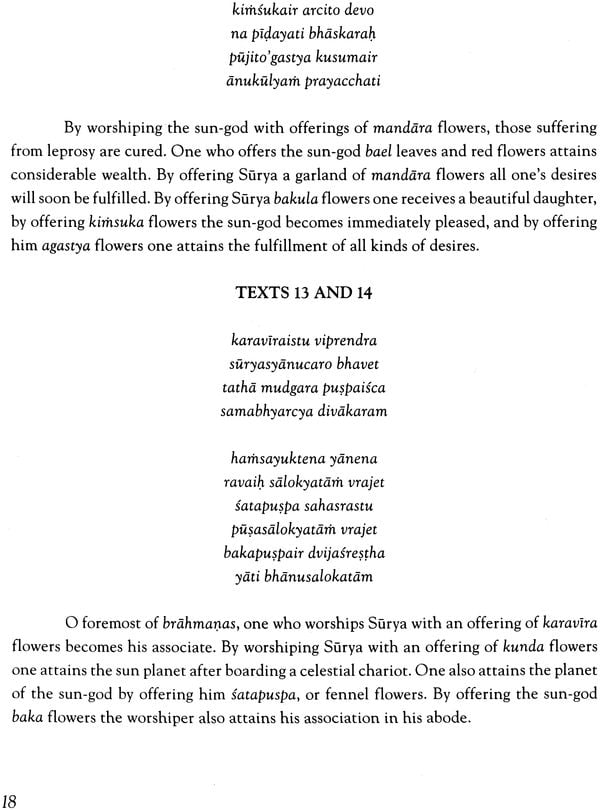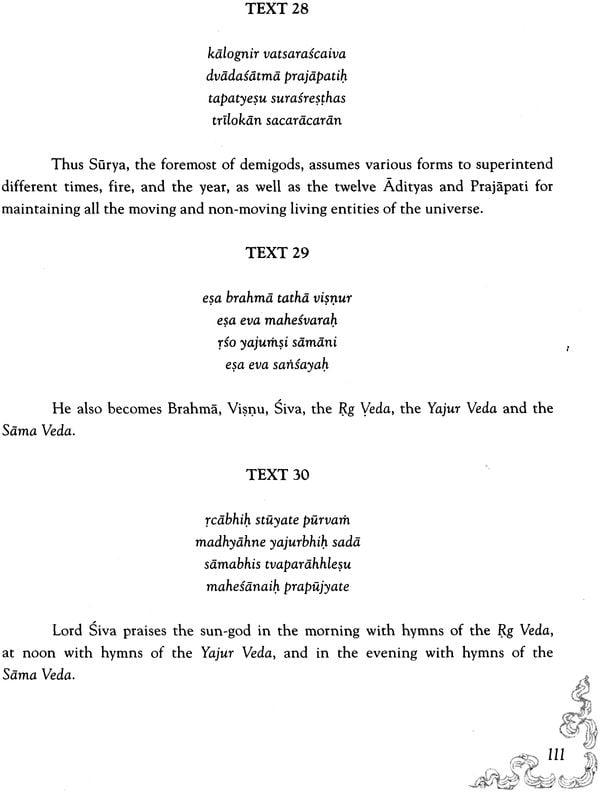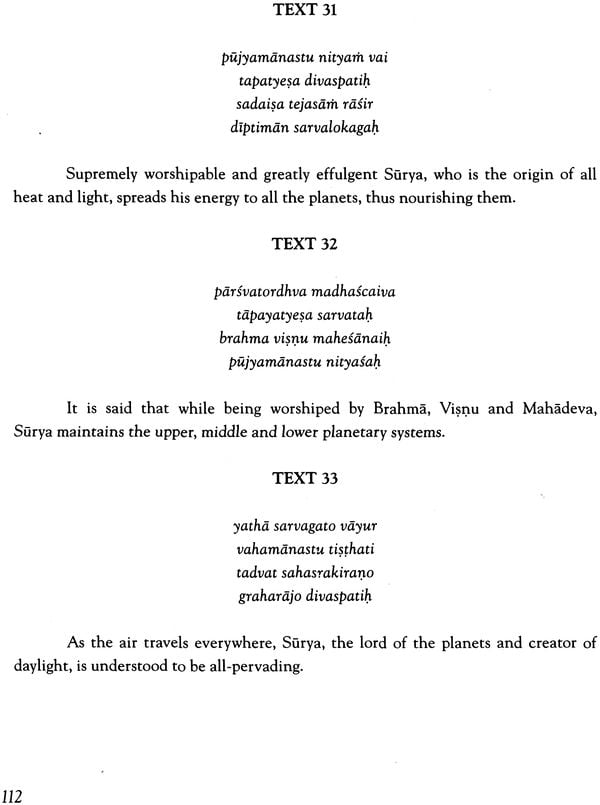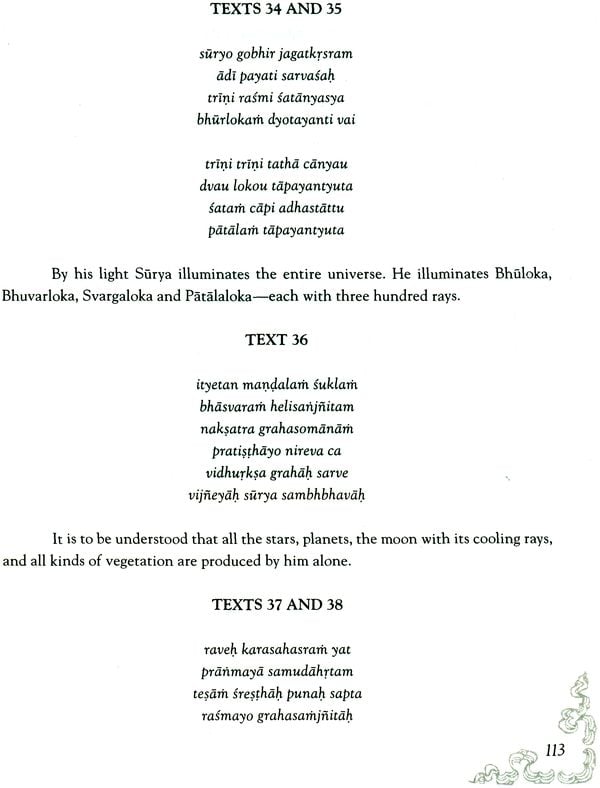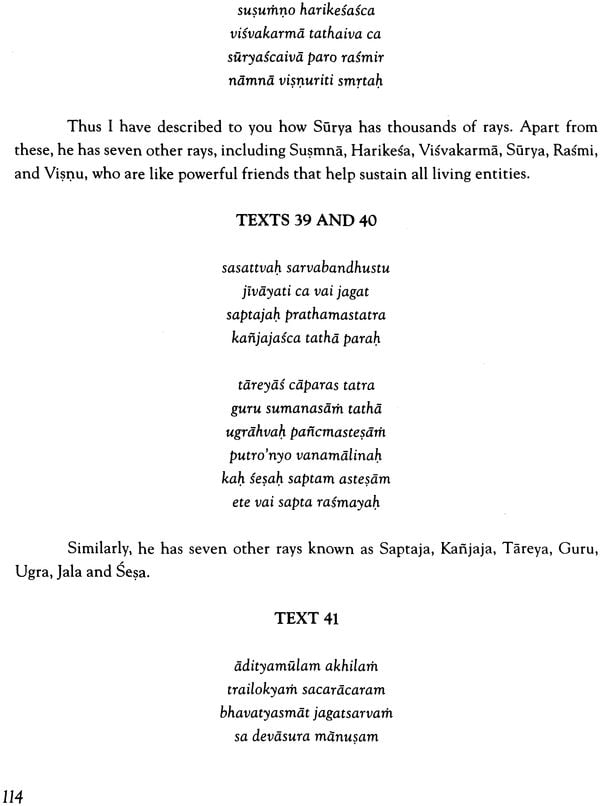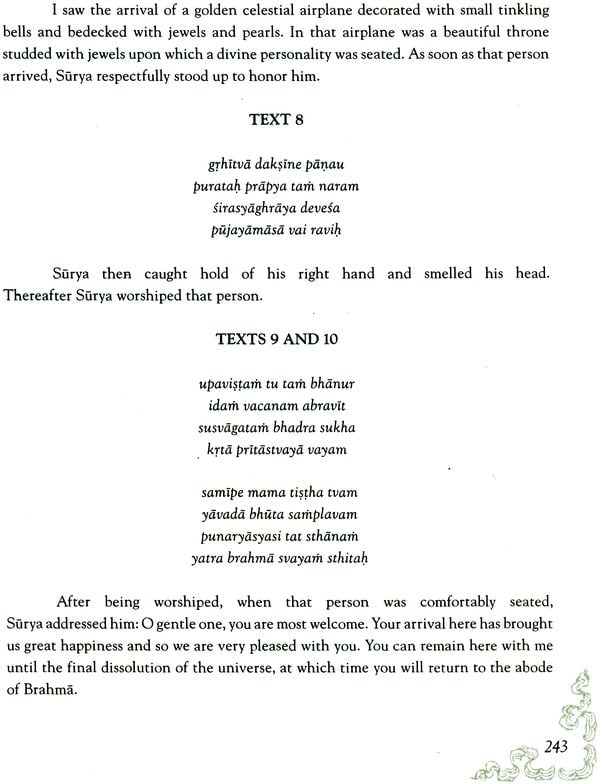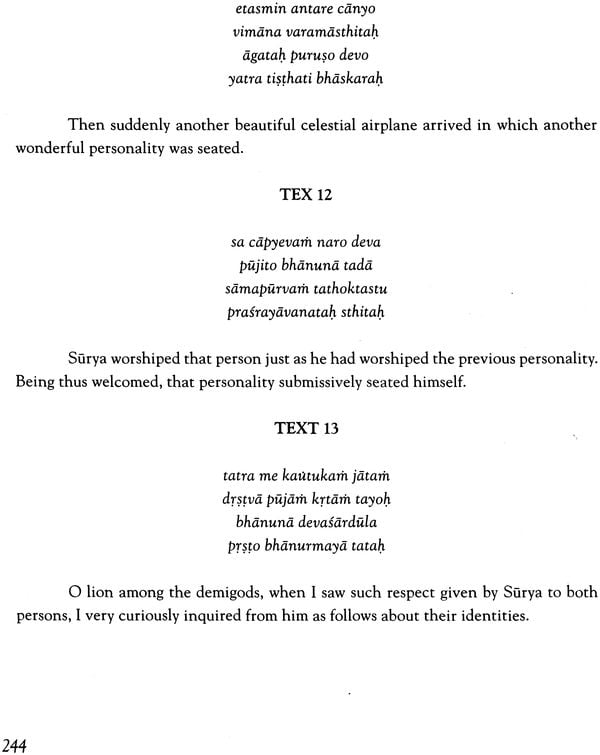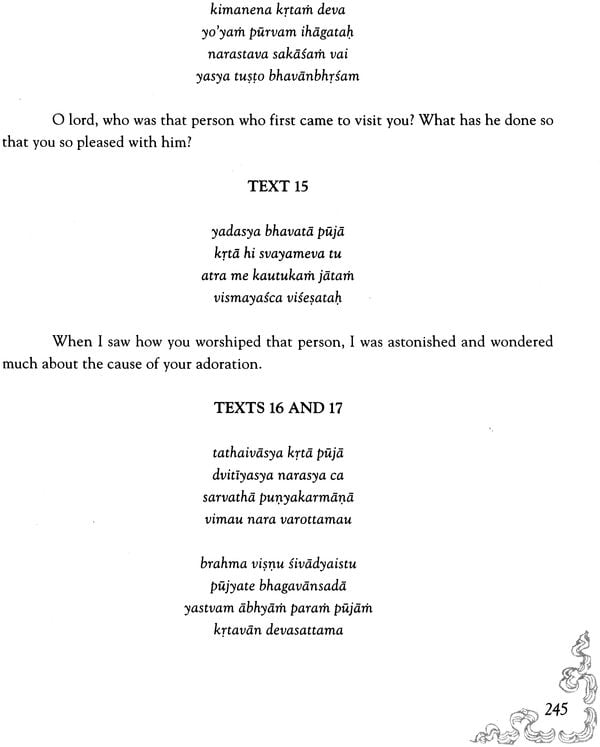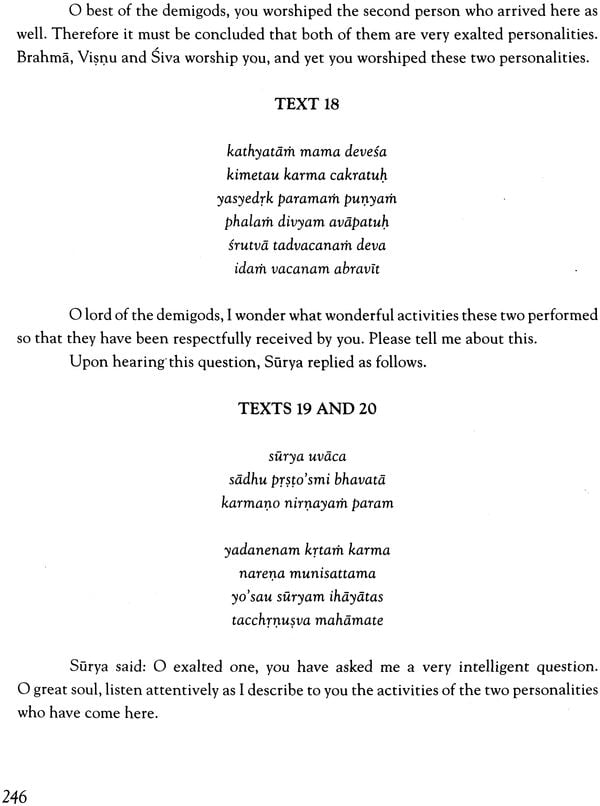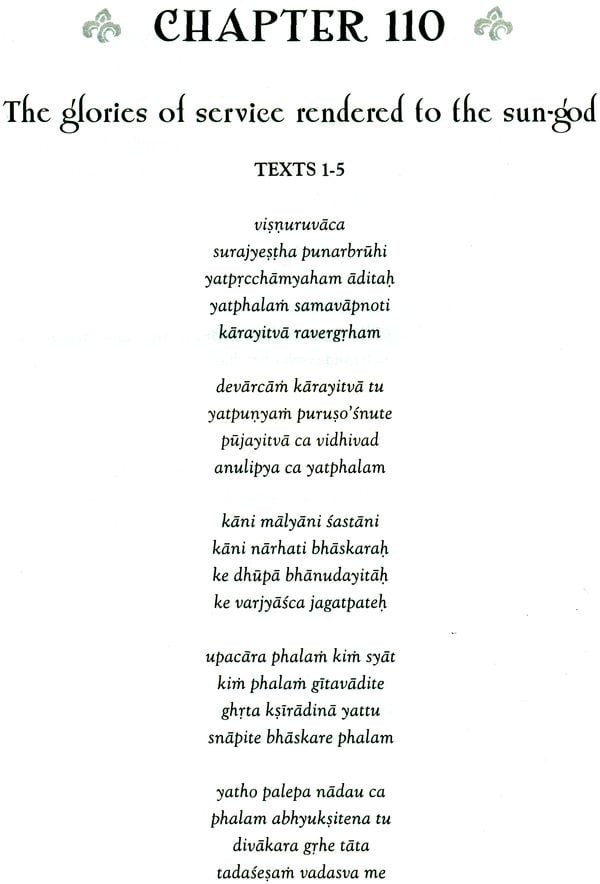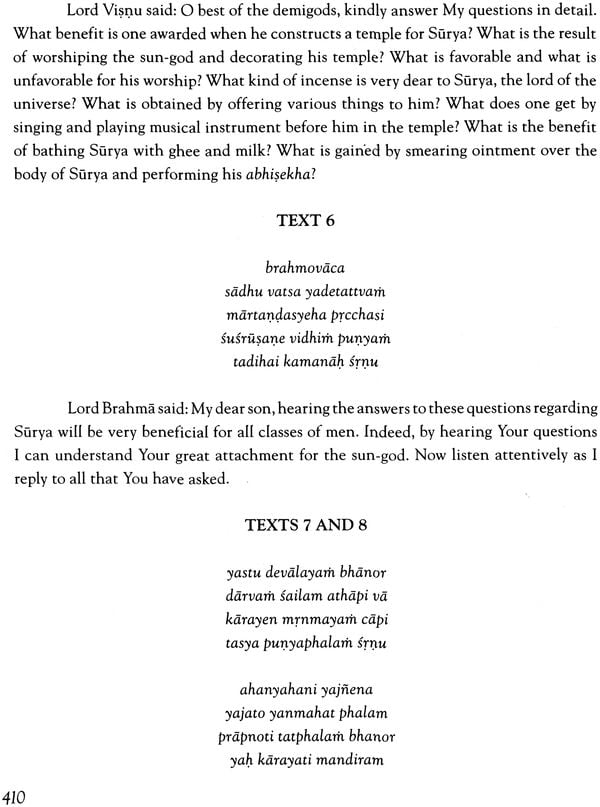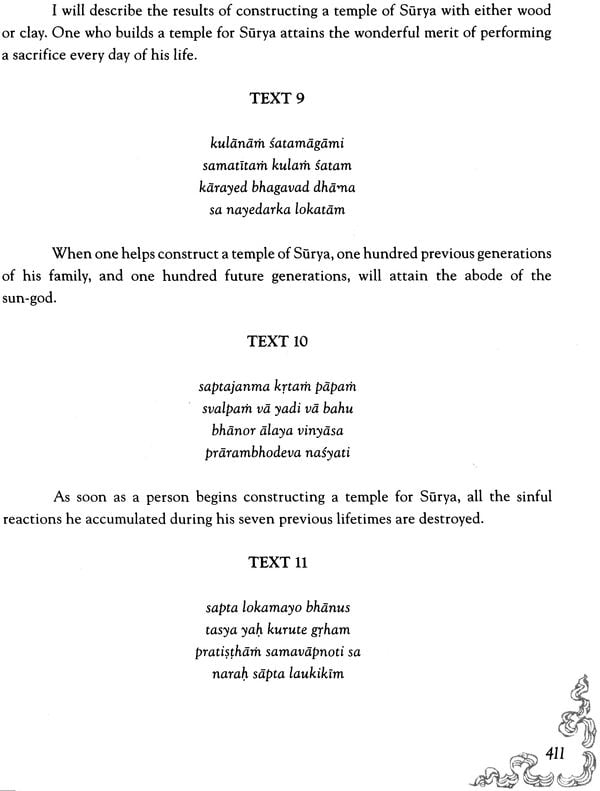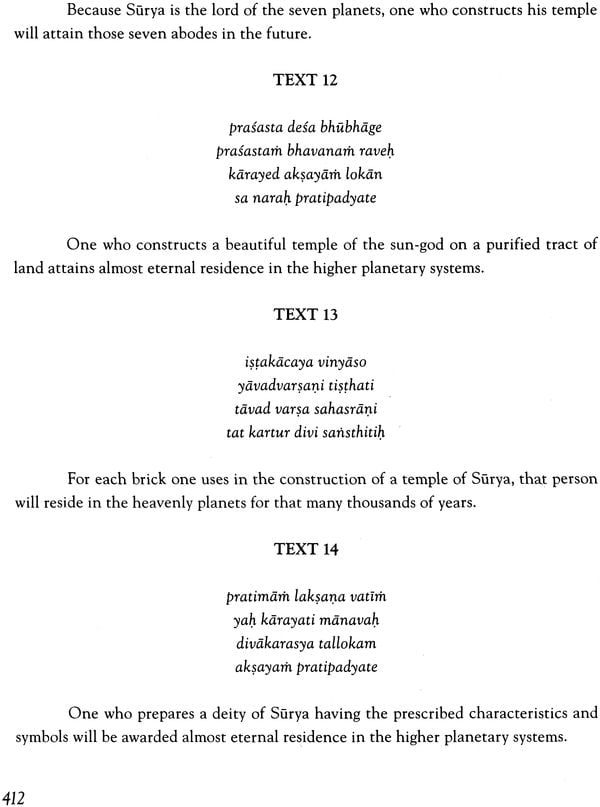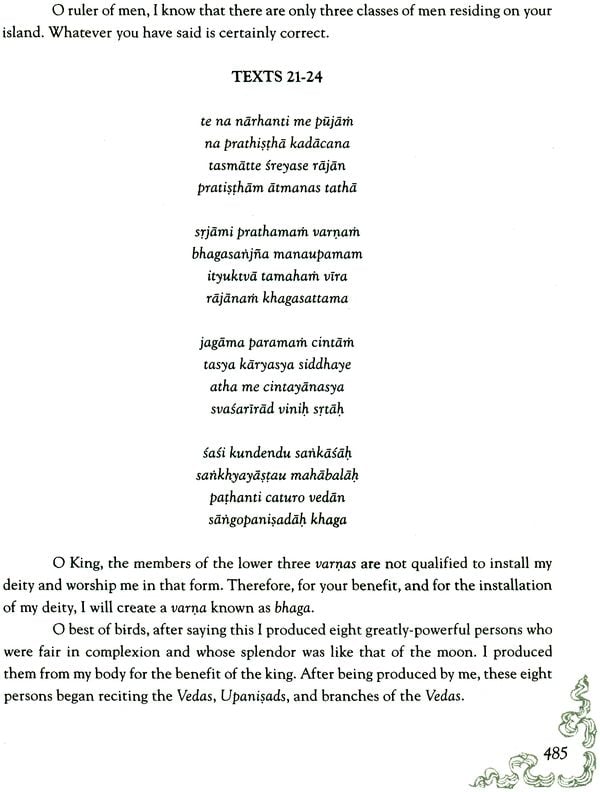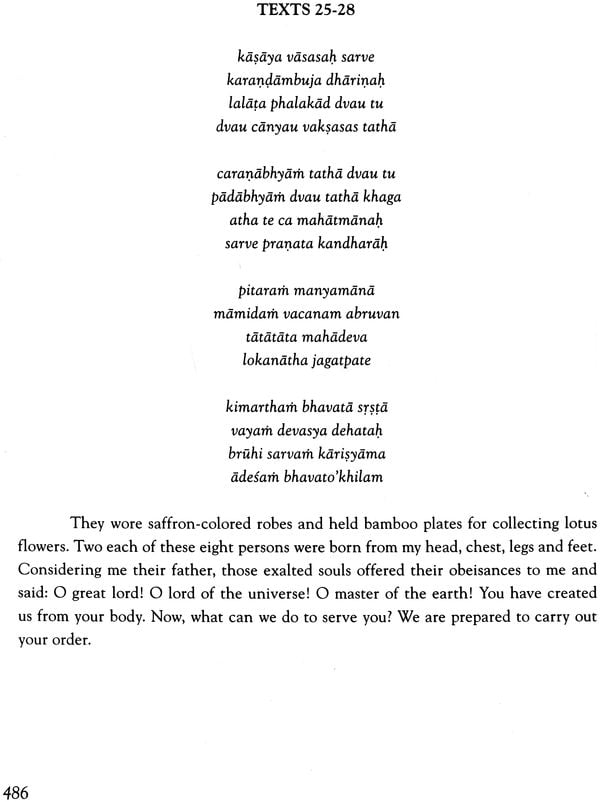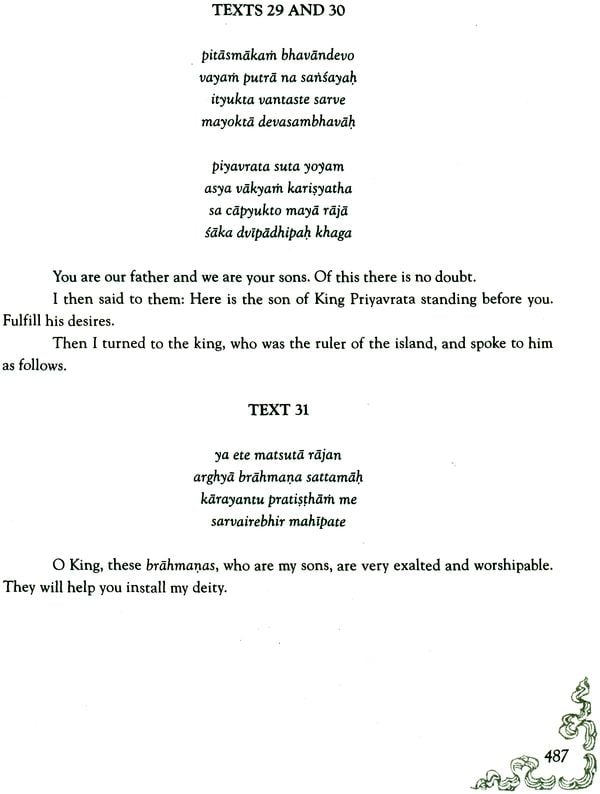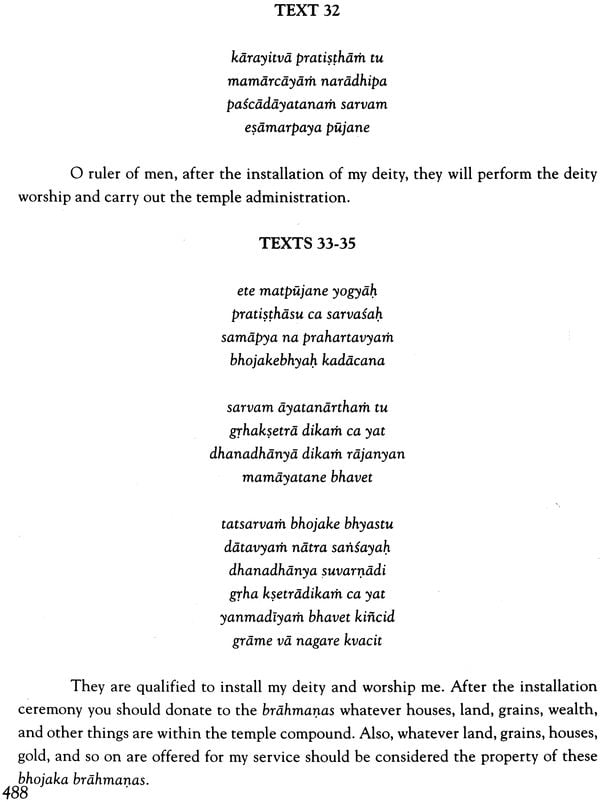
Bhavishya Purana (Volume 3) (Chapter 65-116) (Transliteration and English Translation)
Book Specification
| Item Code: | NAF046 |
| Author: | Sri Krsna Dvaipayana Vedaryasa |
| Publisher: | Ras Bihari Lal and Sons |
| Language: | Transliteration and English Translation |
| Edition: | 2009 |
| ISBN: | 9788184030808 |
| Pages: | 527 |
| Cover: | Hardcover |
| Other Details | 10.0 inch x 7.5 inch |
| Weight | 1.13 kg |
Book Description
The Bhavisya Purana is one of the eighteen major Puranas as stated in the text of srimad Bhagavatam (12.7.23-24): The eighteen major Purana are the Brahma Padma, Visnua, Siva, Lingna, Garuda, Narada, Bhagavata, Agni, Skanda, Bhavisya, Brahma-Vaivarta, Markandya, Vamana, Varaha, Matsya, Kurma and Brahmanda Puranas. Later in the Srimad Bhagavatam (12.13.4-9) when the number of verses contained in each of these major puranas is listed it is said; the Bhavisya Puranas (consists of ) fourteen thousand five hundred (verses). This present edition of the Bhavisya Purana is divided into four parts Brahma Parva Madhyama Parva, Pratisarga Parva, and Uttara Parva.
It is generally understood that the Puranas deal with ancient histories not only on this planet but on planets throughout the universe. The specific appeal of this Purana, however, is that it narrates incidents that will occur in the future as well as account that happened in the distant part.
The Bhavisya Purana is one of the eighteen major Puranas. The specific appeal of this Purana is that it narrates incidents that will occur in the future as well as account that happened in the distant past.
Lord Brahma said: Now I will describe that exalted personality who is worshiped by all the demigod including myself Lord Vishnu and Lord Siva.
The Vedic understanding is that the gross body of a living entity is manifested according to the condition of the subtle body or mind.
Thus the condition of one gross body indicates the previous mentality of a person and this process is carried on from one moment to the next. Why does someone have particular bodily features and what do they indicate?
This is the subtle science that is explained in this volume of the Bhavisya Purana.
The Bhavisya Purana is one of the eighteen major Purana as stated in the text of Srimad Bhagavatam (12.7.23-24): The eighteen major Puranas are the Brahma, Padma, Visnu, Siva, Linga, Garuda, Narada, Bhagavata, Agni, Skanda, Bhavisya, Brahamavaivarta, Markanddeya, Vamana, Varaha, Matsya, Kurma and Brahmanda Puranas.
Later in the Srimad Bhagavatam (12.13.4-9) when the number of verses contained in each of these major Puranas is listed it is said; the Bhavisya Purana (consists of) fourteen thousand five hundred (verses). There are statement in other places however that indicate that the Bhavisya Purana contains as many as twenty six thousand verses. This present edition of the Bhavisya Purana is divided into four part Brahma Parva Madhyama Parva pratisarga Parva and Uttara Parva. The of sixty two chapter the pratisarga Parv consists of one hundred chapter and the Uttara Purva consists of two hundred eight chapter.
It is generally understood that the Puranas deal with ancient histories not only on this planet but on planets throughout the universe. The specific appeal of this Puranas however is that it narrates incidents that will occur in the future as well as accounts that happened in the distant past.
Once during a room conversation in Bombay in April 1977, srila Prabhupada was asked about these future predictions:
Tamala Krsna: He says he read a passage of the Bhavisya Maha Purna written by Vyasadeva three thousand years before Christ foretelling Jesus Christs Presence in there any other Prophecies in the Bhavisya Maha Purana or in any other scripture telling more accurately jesus Christ birthday.
Prabhupada: Everything is accurate there.
And again: In the Bhavisya Purana there is a statement about observing different ceremonies celebrating the Lord appearance (birthday) and other transcendental activities. It is said My Lord Janardana (Krsna) please let us know the date when your mother Devaki devi gave birth to you. If you kindly inform us about this then we shall observe a great celebration on this date. O killer of Kesi we are soul one hundred percent surrendered unto your lotus feet and we wish only to please you with our ceremonies.
The vedic understanding is that the gross body of a living entity is manifested according to the condition of the subtle body or mind. Thus the condition of one gross body indicates the previous mentality of a person and this process is carried on from one moment the next. Why does someone have particular bodily feature and what do any indicate? This is the subtle science that is explained in this volume of this Bhavidya Purana.
This present edition is in response to the many requests for an English edition of the Bhavisya Purana and its is the first thus filling a big gap in our library of Vedic literature.
| Chapter 65 | The procedure for worshiping the sun-god | 15 |
| Chapter 66 | Interpretation of dream | 29 |
| Chapter 67 | Result of worshiping the sun-god | 37 |
| Chapter 68 | The names of the sun-god | 45 |
| Chapter 69 | Samba cursed by Durvasa Muni | 51 |
| Chapter 70 | Samba cursed by Lord Krsna. The nature of woment. | 57 |
| Chapter 71 | The twelve expansions of the sun-god. | 73 |
| Chapter 72 | Lord Krsna advises Samba to approach Narada Muni | 83 |
| Chapter 73 | Narada Muni travels to Suryaloka | 89 |
| Chapter 74 | Description of the sun-god | 97 |
| Chapter 75 | The glories of Surya | 103 |
| Chapter 76 | Surya wives and their children | 129 |
| Chapter 77 | Description of the worship Surya | 155 |
| Chapter 78 | The vow of Vijaya Saptami | 167 |
| Chapter 79 | Observance of the Nanda-Vrata | 173 |
| Chapter 80 | Observance of the Bhadra-vrata | 181 |
| Chapter 81 | Observance of the Saumya-vrata | 185 |
| Chapter 82 | Observance of the Kamada-vrata | 187 |
| Chapter 83 | Observance of the Putrada vow | 191 |
| Chapter 84 | Observance of the Jayanta-vrata | 197 |
| Chapter 85 | Observance of the vijaya-saptami | 199 |
| Chapter 86 | Observance of the Adityabhimukha-vrata | 201 |
| Chapter 87 | Observance of the Hrdaya-vrata | 205 |
| Chapter 88 | Observance of the Rogaha-vrata | 207 |
| Chapter 89 | Observance of the Mahasveta-vrata | 209 |
| Chapter 90 | The merit of worshiping the sun-god | 215 |
| Chapter 91 | The glories of reciting the Vedic literature | 241 |
| Chapter 92 | The glories of bathing the deity of the sun-god | 263 |
| Chapter 93 | Observing the vow of Jaya saptami | 297 |
| Chapter 94 | Further considerations of the worship of Surya | 277 |
| Chapter 95 | The vow of Apaarajita Saptami | 287 |
| Chapter 96 | The vow of Mahajaya Saptami | 293 |
| Chapter 97 | The vow of Nanda Saptami | 297 |
| Chapter 98 | The vow of Bhadra Saptami | 303 |
| Chapter 99 | The presiding deities of the tithis and nakastras | 311 |
| Chapter 100 | The result attained by worshiping surya | 335 |
| Chapter 101 | The vow of sveta saptami | 353 |
| Chapter 102 | Further description of the vow of Saptami | 361 |
| Chapter 103 | The vow of papanasini Saptami | 371 |
| Chapter 104 | The worship of surya during the two periods of uttrayana and daksinayana | 377 |
| Chapter 105 | The vow of Sarvapti saptami | 385 |
| Chapter 106 | The vow of martanda spatami | 389 |
| Chapter 107 | The vow of Ananta Saptami | 395 |
| Chapter 108 | The vow of the Saptami of the fortnight of the waxing moon in the month of Sravana | 399 |
| Chapter 109 | The vow of the Saptami of the fortnight of the waxing moon in the month of Magha | 403 |
| Chapter 110 | The glories of service rendered to the sun-god | 409 |
| Chapter 111 | The glories of bathing the deity of Suray | 421 |
| Chapter 112 | Suitable offering for the deity of Surya | 427 |
| Chapter 113 | The story of king Satrajita. Surya conversation with Aruna | 439 |
| Chapter 114 | Description of the bhojaka brahmanas | 479 |
| Chapter 115 | The story of Bhadra | 503 |
| Chapter 116 | The Yamadutas instruct the resident of hell | 519 |
